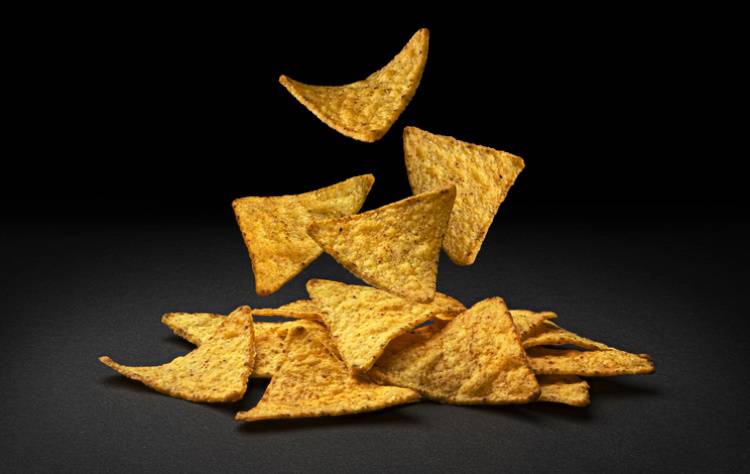In their editorial, biophotonics researcher Dr Christopher Rowlands and optical physicist Jon Gorecki from Imperial College London (neither of whom participated in the study) commented that while life does often mirror fiction, it rarely does so with such precision and at such a delayed pace. They were discussing a recent discovery by Stanford University researchers, who found that a yellow food dye commonly found in products like chips, cornflakes and sweets could make mice’s skin temporarily transparent.
“It’s one of those ideas that’s obvious in hindsight,” Dr Rowlands shared in an interview.
“Once I read the study, I couldn’t believe no one had thought of it sooner. I fully expect to see several follow-up studies over the next year applying the same principle to achieve deeper tissue penetration.”
What’s the big deal?
This groundbreaking study marks the first time scientists have managed to make skin temporarily transparent by adjusting the refractive index – the measure of how light bends as it passes through different materials. The goal is to shed more light on the inner workings of the brain and other organs, potentially leading to better insights into complex biological processes and more effective treatments for diseases.
Traditional imaging techniques like ultrasound and MRI have limitations in terms of resolution and depth, but this new approach – published in the journal Science – promises to revolutionize how we visualize living tissues.
According to lead researcher Dr Zihao Ou, who conducted the study during his postdoctoral work at Stanford, it could fundamentally change the landscape of optical research in biology.
“For those familiar with the physics, it all makes sense. But for others, it seems like magic,” said Dr Ou, who now serves as an assistant professor of physics at the University of Texas, Dallas.
It has “blown the record out of the water by a factor of five,” conceded Dr Rowland.
A closer look at the study
The key to this breakthrough is tartrazine, also known as FD&C Yellow #5. It’s a certified food dye deemed safe for consumption by the US Food and Drug Administration (FDA), though it has been linked to hyperactivity in some children. While current imaging techniques can only penetrate about 2mm into the skin, the tartrazine-based solution allows scientists to see up to five times deeper.
When applied to the skin of live mice, the mixture of water and tartrazine rendered the skin transparent, revealing blood vessels and organs just beneath the surface. And unlike the fate of Wells’ fictional invisible man, this effect is reversible – washing off the dye restores the skin’s opacity, while any dye that diffuses into the skin is naturally excreted through urine.
“The fact that the dye is biocompatible is crucial,” Dr Ou noted.
“It’s safe, affordable and effective. We only need a small amount to achieve the desired effect.”
The transparency effect occurs because tartrazine absorbs blue light. When combined with water and the naturally occurring liquid layers within the skin (known as the extracellular matrix), it alters the refractive index to closely match that of skin cells. This adjustment minimizes the scattering of light, allowing it to pass through the skin more directly – like clearing a fog.
“We combined the yellow dye, which is a molecule that absorbs most light, especially blue and ultraviolet light, with skin, which is a scattering medium,” said Dr Ou.
Want to try this tartrazine effect at home?
The National Science Foundation has developed a fun experiment for adults interested in testing the effects of Yellow #5 at home using raw chicken.
“Individually, these two things block most light from getting through them. But when we put them together, we were able to achieve transparency of the mouse skin. It takes a few minutes for the transparency to appear. It’s similar to the way a facial cream or mask works: The time needed depends on how fast the molecules diffuse into the skin.”
Through this method, researchers were able to observe detailed internal structures in mice, including blood vessels on the brain’s surface and muscle movements in the digestive tract.
Applications and future directions
Dr Ou and his team envision numerous applications for this technology, particularly in medical diagnostics. The ability to make tissues temporarily transparent could allow doctors to view tumors, blood vessels and other structures without the need for invasive procedures. This could lead to more accurate diagnoses and better monitoring of diseases.
However, don’t expect this discovery to lead to human invisibility anytime soon. Human skin is 10 times thicker than that of a mouse and researchers are still working to determine the best way to apply this technology to human tissues. Dr Ou’s team at his new Dynamic Bio-imaging Lab at UTD is also exploring other molecules that might be even more effective than tartrazine for this purpose.
Study:
Achieving Optical Transparency in Live Animals with Absorbing Molecules
Authors: Zihao Ou, Yi-Shiou Duh, Nicholas J. Rommelfanger, et al.
Science, 6 Sep 2024, Vol 385, Issue 6713



